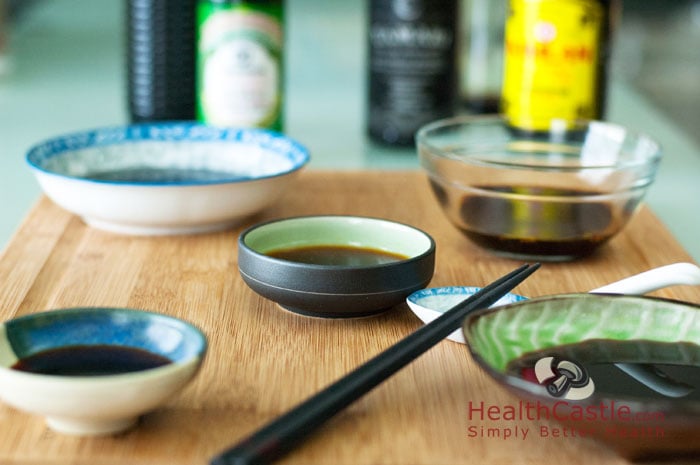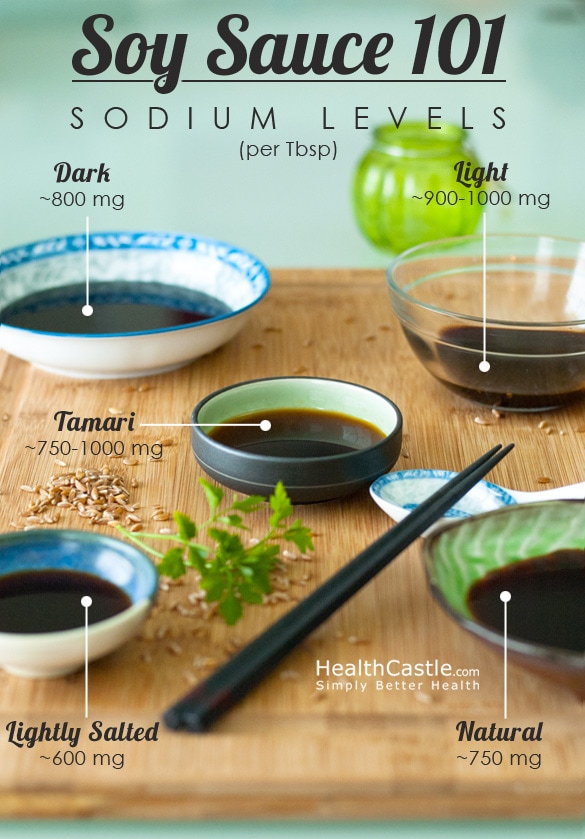
Written By: Sofia Layarda, MPH
Title: Master of Public Health
Alumni: University of California, Berkeley
Last Updated on:

In June 2012, a Dutch study published in the Food Quality and Preference journal reported that substituting salt with naturally brewed soy sauce can reduce sodium content by one-third without compromising taste. How is this possible, when most of us equate soy sauce with high sodium?

Table of Contents
There is no doubt that soy sauce is a high-sodium product. However, the naturally brewed varieties have much higher flavor intensity and complexity; you won’t need as much to achieve a flavor “hit.” From personal experience, I can tell you that naturally brewed soy sauce also changes flavor when cooked, while non-brewed soy sauce tends to stay the same salty flavor.

Naturally brewed soy sauce is actually the liquid resulting from a boiled, mashed, fermented, and aged mash of soybeans, sometimes with added wheat. The culture used for fermentation is a mold, and sometimes bacteria and yeast. The aging process can take months or even years; unfortunately, many cheaper modern soy sauces are no longer made this way. Instead, salt, hydrolyzed soy protein, flavorings and/or colorings are mixed together to create a dark sauce that approximates the saltiness, but none of the flavors, of traditionally brewed soy sauce. We even discovered a soy sauce packet from a Japanese takeout restaurant that contains high fructose corn syrup and caramel coloring!
East Asian households often have several kinds of soy sauce as pantry staples. There are several types of traditionally brewed soy sauce:
Whatever brand you choose, read the ingredients and it should be fairly clear. A naturally brewed or traditionally brewed soy sauce should contain no more than the following ingredients: water, soybeans, maybe wheat, salt, and a starter culture (the mold used to ferment the mash). A genuine, naturally-brewed soy sauce contains no preservatives; therefore it should be refrigerated once it’s open. If the bottle of soy sauce you are checking out contains hydrolyzed soy protein, artificial colorings, artificial flavorings, or other thickeners, put it back on the shelf.
For condiments and processed sauces, label reading is a given in today’s marketplace. Who knew there were so many things to watch out for in something as seemingly simple as soy sauce!
Tell Us: Do you have a favorite soy sauce brand?
Alumni: University of California, Berkeley – Sofia believes in bringing back fun and pleasure into everyday eating. She loves cooking, and is constantly experimenting with ingredients, creating recipes and trying them out on family and friends. Her latest interest lies in finding realistic and practical ways of environmentally-friendly food/eating habits.
Cheese Snacks Nutrition Face-off: Laughing Cow vs. Mini Babybel (2023 Update)